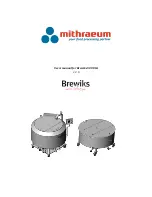
Chapter 3
Hardware Overview
©
National Instruments Corporation
3-3
Input Mode
The NI 6052E has three input modes—nonreferenced single-ended
(NRSE) mode, referenced single-ended (RSE) input mode, and differential
(DIFF) mode. The NRSE and RSE modes provide up to 16 channels on the
NI 6052E. DIFF mode provides up to eight channels on the NI 6052E.
Input modes are programmed on a per channel basis for multiple mode
scanning. For example, you can configure the circuitry to scan
12 channels—four differentially-configured channels and eight
single-ended channels. Table 3-1 describes the three input modes.
For more information about the three input modes, refer to the
section of Chapter 4,
, which
contains signal-path diagrams for the three modes.
Input Polarity and Input Range
The NI 6052E has two input polarities—unipolar and bipolar. Unipolar
input polarity means that the input voltage range is between 0 and V
ref
,
where V
ref
is a positive reference voltage. Bipolar input polarity means
that the input voltage range is between –V
ref
/2 and +V
ref
/2. The device
has a unipolar input range of 10 V (0 to 10 V) and a bipolar input range
of 10 V (±5 V).
You can program polarity and range settings a per channel basis so that you
can uniquely configure each input channel.
Table 3-1.
Available Input Modes for the NI 6052E
Configuration
Description
NRSE
A channel configured in NRSE mode uses one AI line
that connects to the positive input of the
programmable gain instrumentation amplifier
(PGIA). The negative input of the PGIA connects
to AI sense (AISENSE).
RSE
A channel configured in RSE mode uses one AI line
that connects to the positive input of the PGIA.
The negative input of the PGIA is internally
connected to AI ground (AIGND).
DIFF
A channel configured in DIFF mode uses two
AI lines. One line connects to the positive input of the
device PGIA, and the other connects to the negative
input of the PGIA.
















































